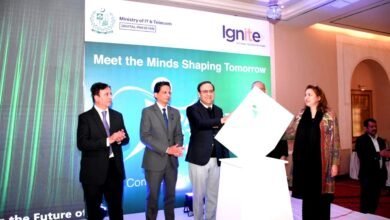Digital Literacy in Pakistan: Bridging the Urban-Rural Divide
Digital literacy in Pakistan is key to bridging the urban-rural divide. Explore impacts of digital inclusion for socio-economic development.

Digital literacy in Pakistan is a pressing concern as the nation navigates the challenges of technological advancement amidst stark disparities between urban and rural communities. While metropolitan areas benefit from robust digital infrastructure, educational resources, and employment opportunities, vast segments of the rural population remain excluded from the digital revolution. This divide not only perpetuates socio-economic inequality but also limits Pakistan’s potential for inclusive growth in an increasingly digitized world. Without urgent intervention, millions risk being left behind, unable to access essential services, education, and economic opportunities that depend on digital competence.
The urban-rural gap in digital literacy in Pakistan stems from multiple factors, including inadequate internet connectivity, financial constraints, and a lack of awareness about the benefits of digital tools. In cities, schools, businesses, and government services are rapidly adopting technology, whereas rural areas struggle with electricity shortages, limited access to devices, and insufficient training programs. Bridging this divide requires coordinated efforts from policymakers, private sector stakeholders, and civil society to ensure equitable access to digital resources. Addressing these challenges is not just a matter of technological advancement but a crucial step toward reducing poverty, empowering marginalized communities, and fostering sustainable development across the country.
Digital Literacy in Pakistan
The Current State of Digital Literacy in Pakistan
Pakistan has made notable strides in improving internet penetration, with over 125 million broadband users as of 2024. However, digital literacy defined as the ability to use digital tools effectively remains low, particularly in rural regions. Urban centers benefit from better infrastructure, private-sector initiatives, and educational institutions that promote digital skills. In contrast, rural areas face electricity shortages, limited internet connectivity, and a lack of training facilities. According to the Pakistan Bureau of Statistics, only 35% of rural households have access to the internet, compared to 65% in urban areas. This disparity exacerbates socio-economic inequalities, limiting opportunities for rural populations in education, employment, and civic participation.
Key Barriers to Digital Literacy in Rural Pakistan
Several factors contribute to the urban-rural digital divide. Infrastructure limitations, such as unreliable electricity and poor internet coverage, make it difficult for rural communities to adopt digital tools. Additionally, economic constraints prevent many families from affording smartphones or computers. Even when devices are available, low awareness of digital platforms and their benefits restricts usage. Gender disparities further compound the issue, with cultural norms often discouraging women and girls from accessing technology. Lastly, the education system in rural areas lacks emphasis on digital skills, leaving students unprepared for a technology-driven job market.
Government and Private Sector Initiatives
Recognizing the importance of digital literacy, the Pakistani government has launched several programs, such as the Digital Pakistan Vision, aimed at expanding internet access and promoting IT education. Projects like the Universal Service Fund (USF) work to improve connectivity in underserved regions. Meanwhile, private organizations and NGOs are conducting digital skills training programs, particularly for women and youth. Companies like Telenor Pakistan and Jazz have introduced digital learning platforms to enhance accessibility. However, sustained efforts and policy reforms are needed to scale these initiatives effectively.
The Role of Education in Bridging the Digital Divide
Integrating digital literacy into school curricula is essential for long-term progress. Schools in urban areas often include basic computer courses, but rural institutions lack both resources and trained teachers. Public-private partnerships can help establish computer labs and teacher training programs in remote areas. Furthermore, vocational training centers should offer courses in digital marketing, freelancing, and e-commerce to empower rural youth with employable skills.
The Impact of Digital Literacy on Socio-Economic Development
Empowering Workforce and Enhancing Employment Opportunities
Digital literacy plays a pivotal role in equipping individuals with the skills needed for modern jobs. As industries increasingly rely on technology, workers with digital competencies have better access to employment opportunities, remote work, and freelancing platforms. In Pakistan, digital skills training can help bridge the unemployment gap, particularly for youth and women in rural areas, by connecting them to global job markets.
Boosting Financial Inclusion and Digital Payments
A digitally literate population is more likely to adopt online banking, mobile wallets, and digital financial services. This shift reduces reliance on cash, minimizes fraud risks, and enables easier access to credit and government subsidies. In rural Pakistan, where traditional banking penetration is low, digital literacy can accelerate financial inclusion, helping small businesses and farmers participate in the formal economy.
Revolutionizing Education Through E-Learning
Digital literacy enables students and educators to leverage online learning platforms, digital textbooks, and virtual classrooms. This is especially crucial in remote areas where access to quality education is limited. By integrating digital tools into education, Pakistan can reduce dropout rates, improve literacy, and create a more skilled workforce for future economic demands.
Strengthening Agricultural Productivity with Agri-Tech
Farmers with digital literacy can utilize mobile apps, weather forecasting tools, and online marketplaces to enhance crop yields and sales. Digital platforms provide real-time information on pest control, irrigation, and fair pricing, helping rural farmers maximize profits. Agri-tech adoption can transform Pakistan’s agricultural sector, which remains a backbone of its economy.
Improving Healthcare Access via Telemedicine
Digital literacy facilitates the use of telemedicine, allowing rural communities to consult doctors remotely, access health information, and receive timely medical advice. Mobile health apps and online diagnostic tools can bridge the healthcare gap between urban and rural areas, reducing preventable diseases and improving public health outcomes.
Encouraging Entrepreneurship and E-Commerce Growth
With digital skills, small business owners can expand their reach through e-commerce platforms like Daraz, Shopify, and social media marketing. This opens new revenue streams, particularly for women and rural entrepreneurs, fostering economic independence and reducing poverty.
Read More: Growing Cybercrime in Pakistan: What the Law Says and What You Can Do
Conclusion
Digital literacy in Pakistan stands at a critical juncture, where strategic interventions can either bridge or further widen the troubling urban-rural divide. As the world accelerates toward complete digital integration, Pakistan must prioritize inclusive policies that bring marginalized rural communities into the technological mainstream. This requires more than just infrastructure development it demands comprehensive education reforms, affordable access to digital tools, and community-centric awareness programs. Without such measures, the growing digital gap risks cementing existing inequalities, leaving millions trapped in cycles of poverty and exclusion.
The path forward for digital literacy in Pakistan must be collaborative, engaging government initiatives, private sector innovation, and grassroots activism. Successful models from other developing nations prove that with targeted investment in digital education and connectivity, rural populations can rapidly catch up to their urban counterparts. By empowering farmers with agri-tech solutions, enabling students with e-learning platforms, and creating digital job opportunities, Pakistan can transform its rural landscape. The time for action is now only through sustained, collective effort can the nation ensure that its digital revolution leaves no citizen behind. The benefits of an inclusive approach will extend far beyond technology, fostering economic growth, social mobility, and national progress for generations to come.
FAQs
What is digital literacy, and why is it important in Pakistan?
Digital literacy refers to the ability to use digital devices and the internet effectively. In Pakistan, it is crucial for education, employment, and accessing essential services, especially in rural areas.
How does the urban-rural divide affect digital literacy?
Urban areas have better internet access and resources, while rural regions face infrastructure and economic challenges, leading to unequal opportunities.
What are the main barriers to digital literacy in rural Pakistan?
Key barriers include poor internet connectivity, lack of electricity, affordability issues, low awareness, and gender disparities in technology access.
What initiatives are improving digital literacy in Pakistan?
Programs like Digital Pakistan Vision, USF projects, and private-sector training camps are working to enhance digital skills and internet accessibility.
How can individuals contribute to improving digital literacy?
People can volunteer in training programs, donate devices, or advocate for policies that promote digital inclusion in underserved communities.












One Comment